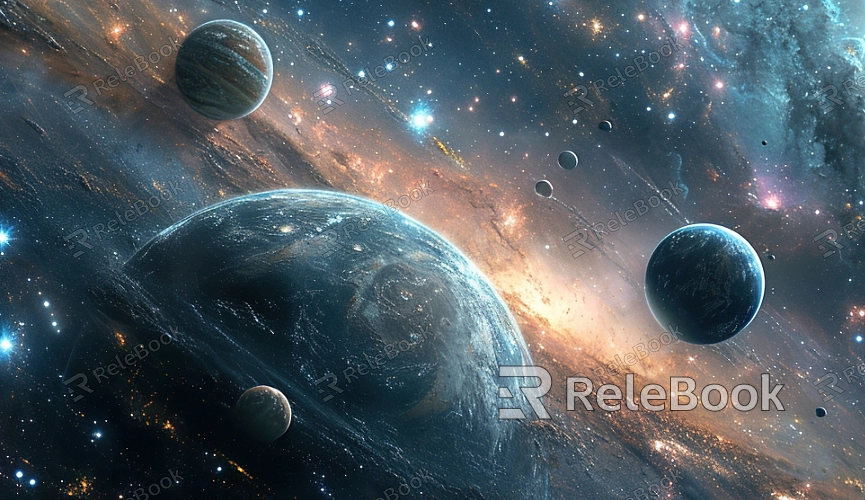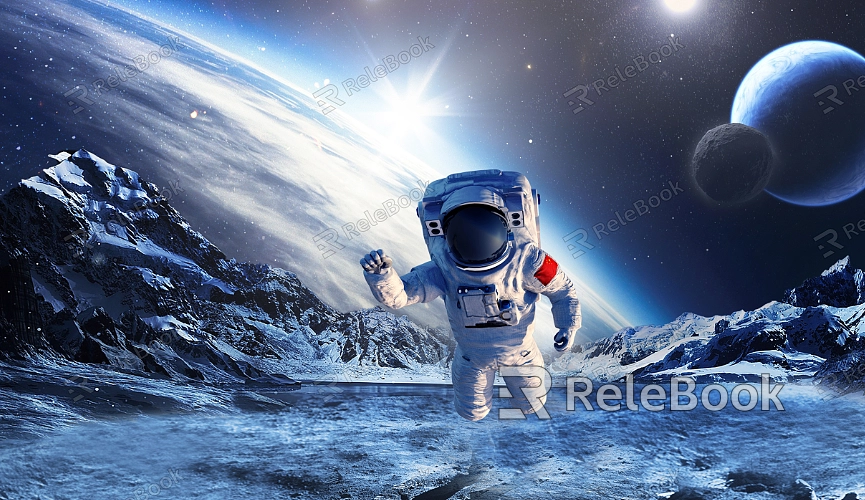Best HDR Space Texture Sources for Sci-Fi Scenes
Building sci-fi environments demands an exceptional level of visual quality, with space backgrounds often serving as key elements. To enhance realism and add a dynamic, visually striking atmosphere, designers commonly use HDR space textures. These textures capture subtle light variations and simulate realistic environmental lighting, making them perfect for space-themed sci-fi scenes. This article explores the best HDR space texture resources, offering effective options and optimization techniques to help you achieve outstanding results in your projects.

1. High-Quality HDR Space Textures from Relebook
Relebook is a great source for a wide range of HDR textures, especially for sci-fi and space scenes. Their texture library is not only extensive but also provides resources with excellent quality, ideal for both concept design and final rendering stages.
Diverse Options: Relebook offers everything from distant nebulae to intricate galaxies, meeting various needs for different sci-fi scenes. The textures are rich in detail, with strong lighting capabilities, ensuring realistic light effects in your designs.
Convenient Downloads: All resources from Relebook are optimized and easy to download directly from the website. They can be seamlessly imported into popular 3D modeling software, saving significant prep time.
2. Applying HDR Space Textures in Blender
Blender, a popular open-source 3D modeling software, is often chosen by designers for its powerful rendering engine and support for HDR textures, especially in the creation of space environments.
Environment Texture Import: In Blender, you can easily import HDR files through the “Environment Texture” option. By adding an “Environment Texture” node in the Shader Editor, designers can quickly load and apply space textures to create realistic lighting and shadow effects.
Real-Time Preview and Adjustment: Blender's real-time rendering support allows you to preview and adjust the angle, exposure, and contrast of HDR textures, ensuring the space scene meets your visual expectations.
3. HDR Texture Advantages in 3ds Max
For 3ds Max users, HDR space textures are equally important for improving scene quality. Both the Arnold and V-Ray renderers in 3ds Max support HDR textures, providing designers with flexible lighting control.
Global Illumination Simulation: HDR textures can simulate complex global illumination, allowing light to propagate naturally throughout the scene. This is particularly useful in rendering large-scale space environments with realistic light and shadow interactions.
Customizable Light Intensity: Designers can control the intensity of light in their scenes by adjusting the HDR texture’s brightness. This helps create layers of visual depth by fine-tuning the overall lighting balance.
4. Using HDR Textures in Cinema 4D
Cinema 4D is a powerful 3D design tool widely used in visual effects and animation. HDR space textures in Cinema 4D help designers create realistic space backdrops with minimal effort.
Seamless Sky and Background Integration: HDR space textures can be directly applied to Cinema 4D’s sky object, ensuring a smooth integration between the background and models. Whether creating a vast cosmic expanse or focusing on close-up planetary details, these textures adapt perfectly.
Multiple Rendering Options: Cinema 4D supports a variety of render engines like Octane and Redshift, which are capable of maximizing the dynamic range of HDR textures, producing highly realistic lighting and shadow effects.

5. Optimizing HDR Lighting in Space Scenes
In sci-fi scenes, HDR space textures are not just used as background lighting—they can also enhance the atmosphere through careful adjustments and optimization.
Exposure Control: Space scenes often involve extreme lighting conditions. Designers can adjust the exposure of HDR textures to fine-tune the brightness levels, avoiding overly bright or dim scenes and achieving balanced visuals.
Adjusting Light Direction: By rotating the HDR texture, you can change the light source direction to create different moods in your space environment. The right lighting angle can make objects in the scene look more realistic and three-dimensional.
6. Choosing the Right HDR Space Texture
Selecting the appropriate HDR space texture is crucial when building sci-fi scenes. Different textures can create entirely different space atmospheres, so designers should choose based on the project’s specific needs.
Texture Resolution and Quality: To ensure clarity in the final output, it’s recommended to select high-resolution HDR textures. Relebook offers optimized textures that strike a balance between high quality and rendering efficiency.
Lighting Characteristics: Some space scenes might need specific lighting features, such as the intense light of stars or the scattered glow of nebulae. Designers can select HDR textures based on the lighting demands of the scene to ensure the atmosphere aligns with the storyline.
7. Impact of Renderer Choice on HDR Effects
Different renderers will showcase HDR textures in varying ways. Depending on the project, choosing the right renderer can maximize the effects of HDR textures.
Physically-Based Renderers: Path-tracing renderers like Cycles and Arnold simulate light propagation accurately, making them ideal for high-quality space scene renders.
Real-Time Renderers: Engines like Eevee or Octane are great for quickly previewing scene effects. Though they may lack some fine details in light tracing, they are perfect for rapid project iterations.
By carefully selecting and applying HDR space textures, designers can create visually compelling sci-fi scenes with ease. High-quality HDR resources from platforms like Relebook can significantly expand your creative possibilities. If you're looking for more varieties of HDR textures or other 3D modeling and rendering assets, Relebook is an invaluable platform that can help elevate your designs to new heights.

